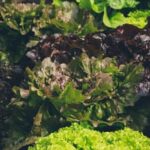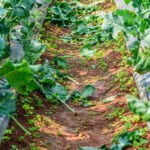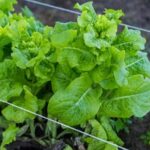Mulching is a crucial practice for maintaining healthy and thriving vegetable gardens. From conserving moisture to preventing soil erosion, mulch offers a multitude of benefits for your vegetable plants. In this comprehensive guide, we will explore the importance of mulching in vegetable gardens, the various types of mulch materials available, and how to properly apply and maintain mulch for optimal results.
When it comes to vegetable gardening, mulch plays a vital role in promoting plant health and productivity. Not only does it help retain moisture in the soil, but it also suppresses weed growth, regulates soil temperature, and prevents nutrient leaching. By understanding the significance of mulching, you can maximize the potential of your vegetable garden and ensure its long-term success.
In addition to discussing the benefits of mulching for vegetable plants, we will also delve into the different types of mulch materials that are best suited for vegetable gardens. Whether you’re considering organic options like straw or compost, or inorganic choices such as plastic or rubber mulch, we’ll provide insights into selecting the right mulch for your specific gardening needs. Stay tuned as we explore everything you need to know about effectively mulching your vegetable garden.
Choosing the Right Mulch for Your Vegetable Garden
When it comes to choosing the right mulch for your vegetable garden, there are several factors to consider. Here are some key points to think about before you make your selection:
- Type of Mulch Material: There are various types of mulch materials available for vegetable gardens, including organic options like straw, compost, grass clippings, and wood chips, as well as inorganic materials such as plastic and landscape fabric. Each type of mulch has its own benefits and drawbacks, so it’s important to choose one that aligns with the specific needs of your vegetable plants.
- Compatibility with Vegetable Plants: Certain types of mulch may be better suited for particular vegetable plants. For example, some plants may benefit from the nutrient-rich decomposition process of organic mulches like straw or compost, while others may require the heat retention properties of plastic mulch. Consider the specific requirements of your vegetable garden when selecting a mulch material.
- Quantity Needed: The amount of mulch required for your vegetable garden will depend on the size of your garden beds and the density of planting. It’s essential to calculate the quantity needed accurately to ensure proper coverage and optimal benefits for your plants. Be sure to measure your garden area before purchasing mulch materials.
By carefully considering these factors, you can make an informed decision about which type of mulch is best suited for your vegetable garden. This will help ensure that your plants receive the maximum benefit from the mulching process while promoting healthy growth and abundant yields in your garden.
How to Prepare Your Vegetable Garden for Mulching
Before applying mulch to your vegetable garden, there are several important steps to take in order to prepare the soil and ensure that your plants will benefit from the mulching process. One of the first things to consider is weeding. Before laying down the mulch, it’s essential to remove any existing weeds from your garden beds to prevent them from growing through the mulch and competing with your vegetable plants for nutrients.
In addition to weeding, proper soil preparation is crucial for successful mulching. This can include loosening compacted soil and adding compost or other organic matter to improve soil structure and fertility. This step will create an optimal environment for plant growth and help the mulch provide better insulation and moisture retention.
Finally, it’s important to ensure that your vegetable plants are adequately hydrated before applying mulch. Water the garden thoroughly, allowing the water to penetrate deeply into the soil. By doing so, you’ll set up a good foundation for your plants as they enter the mulching stage.
| Vegetable Garden Preparation Steps | Recommendations |
|---|---|
| Weeding | Remove all existing weeds from garden beds before applying mulch. |
| Soil Preparation | Loosen compacted soil and add organic matter such as compost. |
| Hydration | Thoroughly water the garden before applying mulch to ensure adequate moisture levels. |
Applying Mulch to Your Vegetable Garden
| Types of Mulch | Best for Which Vegetable Plants |
|---|---|
| Straw mulch | Tomatoes, peppers, and eggplants |
| Grass clippings | Cucumbers, squash, and pumpkins |
| Wood chips | Cabbage, broccoli, and cauliflower |
Applying mulch to your vegetable garden is a crucial step in the maintenance of a healthy garden. Before applying the mulch, it is important to prepare the soil by removing any weeds and adding the necessary nutrients required for optimal plant growth. It is recommended to water your garden thoroughly before applying the mulch as this helps improve moisture retention.
When applying mulch, it is essential to ensure proper techniques are used to create an even distribution across your vegetable garden. This can be done by spreading the mulch material with a rake or shovel. Care should be taken not to cover the stems or crowns of your plants as this could potentially cause damage.
Avoiding common mistakes when mulching such as excessive application of mulch around vegetable plants and using improper materials for your specific plants will help guarantee its success in improving the health and output of your vegetables at harvest time. Following these steps will result in healthier soil conditions promoting stronger root systems and healthier plants overall.
Maintaining Mulch in Your Vegetable Garden
Monitoring and Adjusting Mulch
Once you have applied mulch to your vegetable garden, it’s essential to monitor and adjust it throughout the growing season. Keep an eye on the thickness of the mulch layer, as it may naturally settle or break down over time. If the mulch becomes too thin, simply add more to maintain the desired depth. On the other hand, if the mulch is excessively thick, you can use a rake to distribute it evenly.
Another factor to consider is the moisture level under the mulch. Periodically check the soil beneath the mulch layer to ensure it is not becoming waterlogged or overly dry. Adjust your watering schedule accordingly to maintain optimal moisture levels for your vegetable plants.
Mulch Maintenance Best Practices
To maximize the benefits of mulching in your vegetable garden, there are several best practices for maintaining your mulch. Regularly inspect the mulch for signs of mold, fungus, or pests, and take appropriate measures to address any issues that arise. This may include removing and replacing affected areas of mulch as needed.
Additionally, be mindful of any weed growth that may occur despite the application of mulch. While mulch does serve as a natural weed barrier, some persistent weeds may still emerge. Check for and remove any weeds that penetrate the mulch layer to prevent them from competing with your vegetable plants for nutrients and sunlight.
Managing Moisture Levels
Mulch plays a crucial role in regulating moisture levels in your vegetable garden. During periods of heavy rain or excessive watering, be aware of potential water retention under the mulch. To avoid waterlogging, consider gently fluffing or turning over the top layer of mulch to facilitate evaporation and aeration.
Conversely, during dry spells or hot weather, monitor moisture levels beneath the mulch to prevent dehydration of your soil and plants. Adequate watering in conjunction with a well-maintained layer of mulch will help ensure that your vegetables receive consistent hydration throughout changing weather conditions.
Mulching for Pest and Weed Control in Vegetable Gardens
Mulching can be an effective natural method for preventing pest infestations and controlling weeds in vegetable gardens. By using the right type of mulch and applying it properly, gardeners can create a barrier that deters pests and suppresses weed growth, reducing the need for chemical pesticides and herbicides.
How Mulch Can Help Prevent Pest Infestations
Certain types of mulch, such as cedar or cypress, contain natural oils and compounds that repel insects. In addition to these natural repellents, mulch can also create physical barriers that make it harder for pests to access the plants in your vegetable garden. By reducing access to the plants, mulch makes it more difficult for pests to infest and damage them.
Using Mulch as a Natural Weed Barrier
One of the major benefits of mulching in a vegetable garden is its ability to suppress weed growth. A thick layer of organic mulch can smother existing weeds by blocking their access to sunlight, which inhibits their ability to grow. Additionally, some types of mulch contain compounds that naturally inhibit weed seed germination, further reducing the number of weeds in your garden.
Tips for Addressing Common Pest and Weed Issues With Mulch
To maximize the effectiveness of mulch as a pest and weed control method in your vegetable garden, it’s important to regularly monitor your garden for signs of pest infestations or weed growth. In some cases, additional measures such as hand-picking pests or removing stubborn weeds may be necessary.
Choosing a high-quality organic mulch and applying it correctly will contribute significantly to controlling pests and deterring weeds in your vegetable garden. Additionally, being diligent about maintaining the integrity and thickness of the mulch layer will help ensure its continued effectiveness throughout the growing season.
Mulch as a Temperature Regulator in Vegetable Gardens
When it comes to maintaining the ideal soil temperature for vegetable plants, mulch can play a crucial role. By acting as a layer of insulation, mulch helps regulate soil temperature and protect plants from extreme heat or cold. Here are some key ways in which mulch functions as a temperature regulator in vegetable gardens:
- Insulation: One of the main benefits of using mulch in vegetable gardens is its ability to insulate the soil. During hot summer months, mulch helps keep the soil cool by providing shade and preventing excessive evaporation. In colder seasons, it acts as a barrier against freezing temperatures, helping to maintain warmth in the soil and protect plant roots from frost damage.
- Moisture retention: In addition to temperature regulation, mulch also aids in retaining moisture in the soil, which is essential for maintaining consistent growing conditions for vegetable plants. By reducing water evaporation, mulch helps ensure that the soil remains sufficiently moist without becoming waterlogged, thus contributing to stable soil temperature levels.
- Seasonal adjustments: Depending on the needs of different vegetable plants throughout the year, gardeners can use mulch strategically to help manage temperature fluctuations. For example, lighter-colored or reflective mulches can be used during warmer months to deflect sunlight and reduce heat absorption, while darker-colored mulches can be employed in cooler seasons to help absorb more warmth and maintain suitable soil temperatures.
As gardeners seek to create optimal growing conditions for their vegetable plants, understanding how mulch functions as a temperature regulator is essential. By implementing proper mulching techniques and selecting appropriate materials based on seasonal requirements, gardeners can effectively manage soil temperature levels and support healthier and more productive vegetable gardens.
Conclusion
In conclusion, mulching is an essential practice for maximizing the benefits of your vegetable garden. By using the right mulch materials and applying them properly, you can improve soil quality, regulate temperature, control pests and weeds, and conserve moisture for your vegetable plants.
Whether you choose organic materials like straw or compost, or inorganic options like plastic or rubber mulch, the key is to select the best type of mulch for each specific plant and to maintain it throughout the growing season.
To make the most of mulching in your vegetable garden, it’s important to carefully prepare the soil before applying mulch. This includes weeding, watering, and ensuring that the soil is adequately conditioned. Additionally, monitoring and adjusting the mulch as needed throughout the season will help maintain its effectiveness in regulating soil temperature and moisture levels.
Overall, by implementing proper techniques for choosing, preparing, applying, and maintaining mulch in your vegetable garden, you can create a healthier and more productive growing environment for your plants. Considering all the benefits that mulching provides – from improved soil structure to reduced water usage – it’s clear that integrating this practice into your gardening routine is well worth the effort. So go ahead and start mulching your vegetable garden today for a more bountiful harvest tomorrow.
Frequently Asked Questions
What Is the Best Way to Mulch a Vegetable Garden?
The best way to mulch a vegetable garden is to start by preparing the soil and removing any weeds. Then, add a layer of mulch around the base of your plants, making sure to leave some space around the stem or trunk to prevent rot.
Organic materials like straw, wood chips, or shredded leaves are great options for vegetable gardens as they provide nutrients to the soil as they decompose.
What Should I Put Down Before Mulching?
Before mulching, it’s important to put down a layer of compost or organic fertilizer to ensure that your plants have enough nutrients. This will help promote healthy growth and encourage microorganism activity in the soil. Additionally, laying down a weed barrier fabric can also be beneficial in preventing weed growth before adding your chosen mulch on top.
Should You Mulch a Raised Bed Vegetable Garden?
Mulching a raised bed vegetable garden can still be beneficial in helping retain moisture, suppress weeds, and regulate soil temperature. However, it’s important to choose a mulch that works well with raised beds such as straw or shredded leaves that won’t compress the soil too much or create insulation issues during colder weather.
It’s also essential to adjust watering practices to accommodate for any differences in moisture retention caused by the raised bed structure.

If you’re looking to get into vegetable gardening, or are just looking for some tips on how to make your current garden better, then you’ve come to the right place! My name is Ethel and I have been gardening for years. In this blog, I’m going to share with you some of my best tips on how to create a successful vegetable garden.





